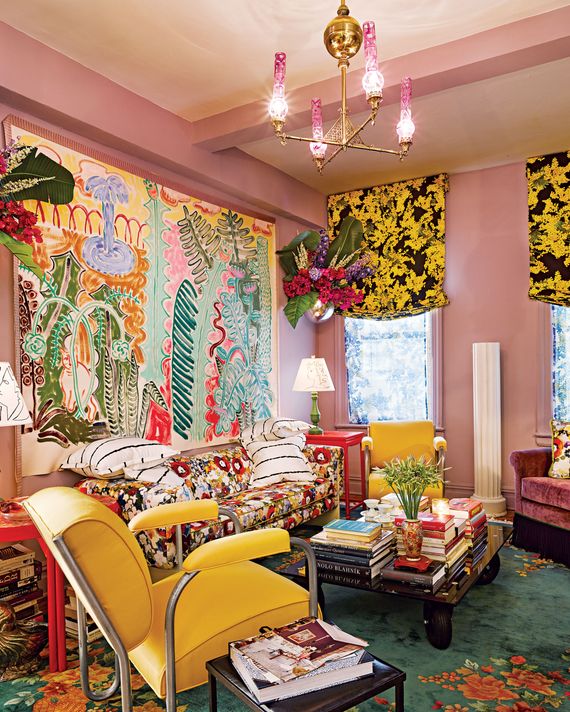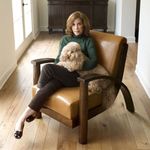
For 14 years, Ross Alexander lived in a 200-square-foot studio apartment on the Upper West Side. Last October, the interior designer felt it was finally time to be able to walk more than two feet to cross the room (one morning when he woke up, he simply moved his arm and knocked over a lamp, which was the “last straw”), so he found a larger apartment, a rental in a prewar building in Washington Heights. “It’s so much more fun to bounce ideas off someone,” says Alexander (who worked variously for the late Prince of Chintz, Mario Buatta; Robert Couturier; and Robert A.M. Stern before becoming director of product development at Kate Verner + Associates), so he turned to his good friend Brock Forsblom, also a designer, for help. “I told him, ‘Think Manolo,’ ” as in the designer Manolo Blahnik. Dries Van Noten’s home outside of Antwerp was another inspiration with its rich palette and overlay of antiques and patterns. “There is a general opinion that maximalism is about clutter,” Forsblom says, “but everything in this apartment has its spot, and every object engages the eye.” They created specific “zones,” which helped create aesthetic order: “There’s the garden living room, the gentlemanly entry hall, the scholar’s study, the Zeffirelli-Mongiardino caravan-of-dreams bedroom,” Forsblom says.
Working pro to pro, the designers could banter about all the geeky details, as when Forsblom asked Alexander, “Shouldn’t we do a tiny little shantung flange to dress the cord twist, or would a tiny welt pipe be better?” And every morning, Alexander would be greeted by a flurry of text messages with links to various items Forsblom had found at online auctions. The two designers enjoyed the process so much, Alexander says, “we’ve joked about sending it all back to auction and starting over.”
In the living room, seen above, the 1920s Chinese rug was purchased at auction. “It was the first thing we bought,” says Brock Forsblom. The Roman shades and scrim sheers are done in coordinating Carolina Herrera prints. “The view doesn’t exactly exist,” he says, “so we wanted a window that would feel open and airy even when it was closed.” The sofa and chairs were both found at auctions; the sofa was covered in Voutsa’s Poppy fabric and the armchairs in yellow wool from Ralph Lauren. The painting over the sofa, by the artist Sophie Larrimore, was commissioned for the room.
*A version of this article appears in the August 19, 2019, issue of New York Magazine. Subscribe Now!
More From Design Hunting
- A Ranch House Turned Modern Oasis
- Home Is Where This Designer’s Art Is
- Transforming a 1980s Time Capsule










